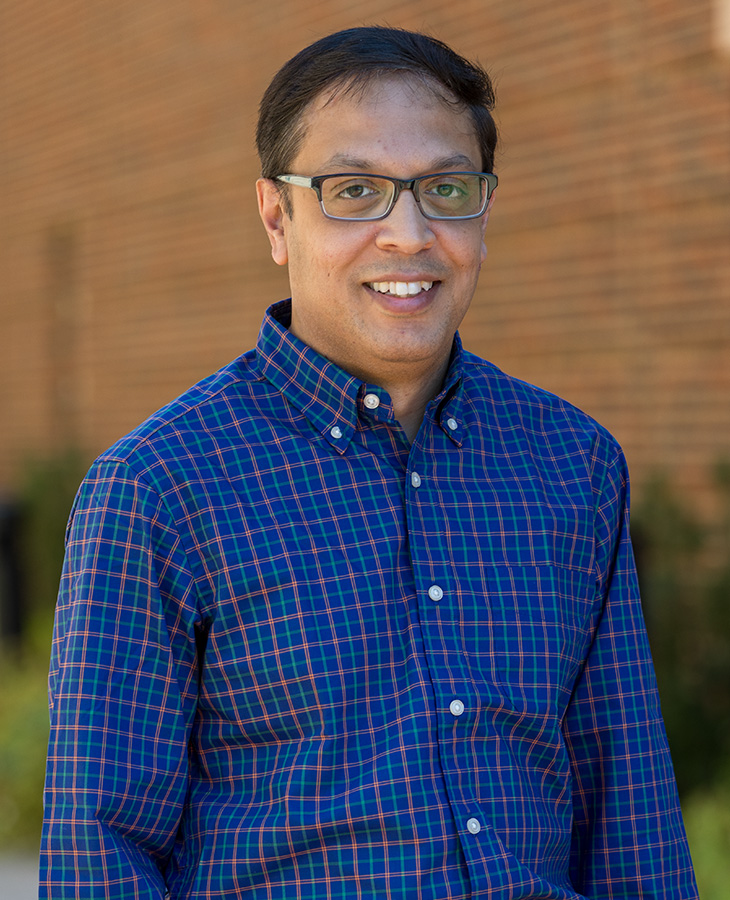
New facade design course provides ARCH students with additional knowledge of building materials
Wednesday, September 25, 2024
Media Contact: Tanner Holubar | Communications Specialist | 405-744-2065 | tanner.holubar@okstate.edu
A new course in the School of Architecture in the College of Engineering, Architecture and Technology at Oklahoma State University is designed to give students a more well-rounded understanding of facades that typically constitute the exterior of a building.
Dr. Bodhisatta Hajra, assistant professor of architectural engineering, worked for nearly five years in the industry while in Canada, prior to joining OSU. Hajra has a background in wind engineering and facade design and was asked to design a new course titled “Facade Design,” once he arrived at OSU last year.
This course was developed in fall 2023 based on his industry experience and offered for the first time as an elective in spring 2024 with seven students enrolled in it.
It is a course that differs from traditional courses taken by civil engineering students, which mostly include the design of concrete, steel, timber or masonry structures.
“Most facades can be made up of different materials, like glass, sheet metal or aluminum,” Hajra said. “But these are not typically taught, in any traditional course or curriculum in any university.”
Many engineering firms have specific groups for design, such as bridges, structural, building envelope and facade design.
Hajra said in his experience, he noticed that many in the facade design group of an engineering firm had gained their knowledge from experience and not through any formal coursework on the subject.

A course such as this can help fill a perceived knowledge gap, as it discusses various kinds of facades and their uses. Materials studied include glass, aluminum, sheet metal and other materials.
The course incorporates structural design and building science aspects of facade design with practical examples.
“We are looking at the structural design of the facade itself,” Hajra said. “The second aspect that also has gained a significant amount of importance is to do with the energy efficiency of a building, because the building facade is something that separates the exterior from the interior.”
Hajra saw that there were experts in structural design of facades or building science, but that it was rare those engineers were experts in both fields. Having a course that provides information on these subjects allows students to have a comprehensive knowledge of both aspects.
Learning from industry professionals
Hajra wants students in his facade design class to be able to learn from professionals within the industry, as it gives them an inside look on how important knowledge of facade design is.
There is a goal to bring more guest speakers to the class and have more spots moving forward. While currently an elective, Hajra said if it were made a required course, it would provide a lot of students with more experience and knowledge about facade design, not only about the properties of materials, but why certain materials work in certain situations.
“In a lot of courses, we might take some calculations from a textbook, but here I try to incorporate that as well as the practical side of it so that students getting into the industry have an overview of what was taught in the class,” Hajra said.
The course is available to any student who is interested, as it can provide undergraduate students with another layer of knowledge.
Hajra said. “I believe this course will help with future employment opportunities.”
Presenting the development of the course to conferences
In June 2024, Hajra presented a paper, which was co-authored by John Phillips, professor and interim head of the School of Architecture, at a conference in Portland, Oregon, for the American Society for Engineering Education.
The paper described the development and content of the facade design course. It also highlighted the necessity of educating architects and architectural engineers about building facades and the benefits of utilizing that knowledge in practice.
The paper was well received by the ASEE audience, and Hajra will speak at another conference in Salt Lake City, Utah in October 2024, at the Facade Tectonics Conference.
